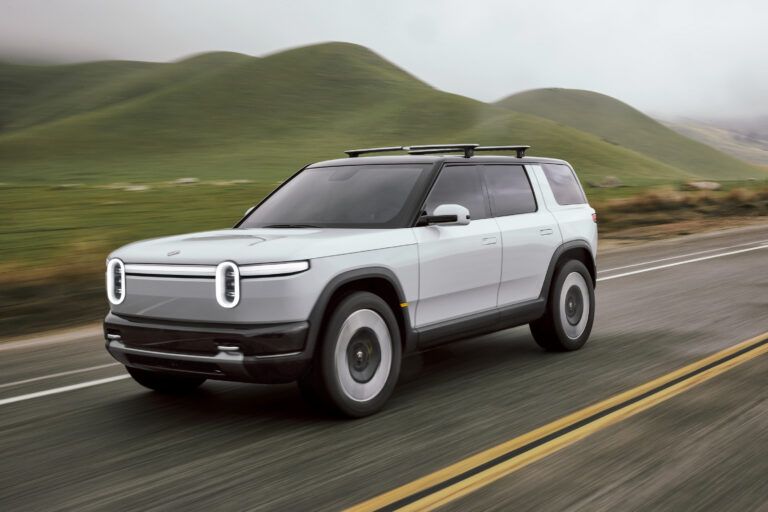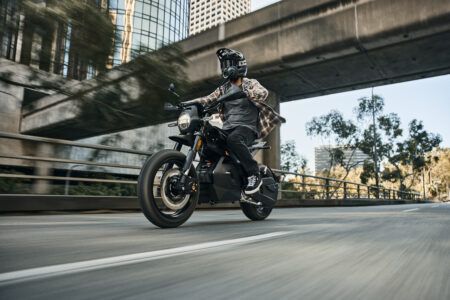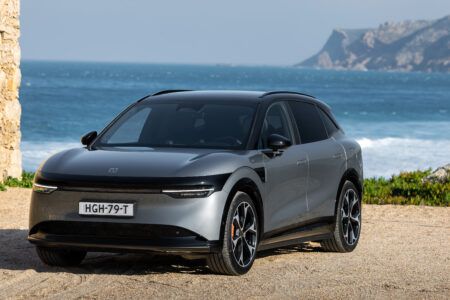The USA’s Rivian has unveiled a game-changing EV platform that will dramatically reduce costs, making its new compact SUVs accessible to a wider market
California-based EV manufacturer Rivian has taken the wraps off its midsize platform, which on which its brand new R2 and R3 vehicles are being built. The R2 is a midsize SUV available to order today for delivery in the first half of 2026. It boasts high performance and multi-purpose everyday functionality, including off-road capability, with five seats. While the R2 is compact the R3 is even smaller, but, according to Rivian will still “deliver big in terms of performance, off-road capability, passenger comfort, and storage.” An R3X is also planned as a higher-performance variant of R3.
“I have never been more excited to launch new products – R2 and R3 are distinctly Rivian in terms of performance, capability, and usability, yet with pricing that makes them accessible to a lot of people,” said Rivian founder and CEO RJ Scaringe. “Our design and engineering teams are extremely focused on driving innovation into not only the product features but also our approach to manufacturing to achieve dramatically lower costs. R2 provides buyers starting in the $45,000 price range with a much-needed choice with a thoroughly developed technology platform that is bursting with personality. I can’t wait to get these to customers.”
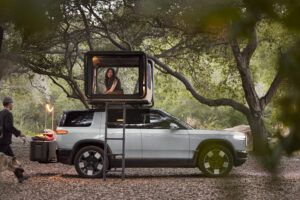 All-new platform
All-new platform
Rivian’s new, midsize vehicle platform serves as the starting point for both the R2 and R3 and helps to deliver the promised performance, range, and cost efficiency. The platform consolidates and eliminates parts thanks to intelligent design, including the use of high pressure die castings, a structural battery unit where the top of the pack also serves as the floor, and closure systems that dramatically reduce complexity. The R2 and R3 also utilize Rivian’s drive unit platform and internally developed network architecture, computer topology and software stack.
R2 and R3 will feature two battery sizes and three motor variants – single-motor (RWD), dual-motor (AWD), and tri-motor (two motors in rear and one in front). The quickest configuration of battery and motors will deliver 0-60 mph in under 3 seconds.
The structural batteries utilize an all-new 4695 cell that gives impressive improvements in energy density and output, estimated to deliver over 300 miles of range on a single charge for both R2 and R3. That all-important charging will be possible from 10% to 80% in less than 30 minutes, using a DC fast charging that is compatible with both NACS (native) and CCS (with adapter). Self Driving: Utilizing Rivian’s new perception stack featuring 11 cameras, five radars and a more powerful compute platform, R2 and R3 will provide dramatically enhanced autonomous capabilities. Ever improving and expanding features: As with all Rivian vehicles, Rivian has developed its network architecture, topology of computers and associated full software platform to facilitate frequent software updates – the headroom for feature growth over time is extremely exciting.
Built in the USA
Rivian plans to start production of R2 in its Normal, Illinois manufacturing facility, which currently builds the R1T, R1S, EDV and RCV.
It believes this will reduce the amount of capital needed to bring R2 to market, compared to using its Gerogia plant, as well as reducing risk to the launch and associated ramp by leveraging its existing manufacturing and operations teams.
Total savings estimated to be over $2.25 billion as compared to the original forecast of launching the first line of R2 production at Rivian’s Georgia site. The savings are expected to come from capital expenditures, product development investment, and supplier sourcing opportunities. Once production of the R2 and R3 begins to grow it is likely that Rivian’s Georgia plant is likely to also be utilized.
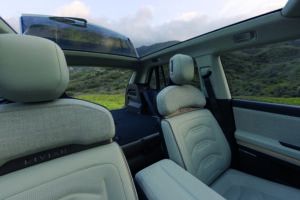 Instantly recognizable
Instantly recognizable
Rivian has created an instantly recognizable style for its vehicles, which is carried through from the flagship R1 range into the new R2 and R3 vehicles. Neverthless the design language adapts to different vehicle sizes and form factors.
Both new vehicles have a silhouette and ‘face’ that are distinctly Rivian, but it’s not all about looks, function is just as important as form for Rivian, with a powered rear glass on the R2 dropping into the liftgate for carrying all types of gear and enabling an open air driving experience, with the four passenger window also lowered. Meanwhile with the R3, its hatch-style design maximizes space while keeping a sporty, athletic silhouette.
The interiors of both vehicles have been meticulously created with a combination of high-end design and sustainable materials that are easy to clean. R2 also features first and second row seating that fold completely flat, for gear, cargo, and even car camping.
Both vehicles have given top priority to maximizing passenger legroom, so even long trips are comfortable in the R2 and R3 are comfortable. There are also front and rear trunks, and additional interior storage, so there is space for everyone and all their gear.
“Our R1 flagship vehicles served as our handshake with the world – with R2 and R3 our obsessive goal is to stay true to Rivian’s product attributes while making our products accessible to a lot more people,” says Rivian chief design officer Jeff Hammoud. “Through a tight integration of hardware, software and human-centered design, we designed R2 by balancing form with function, while building on our inviting and iconic design language.”


